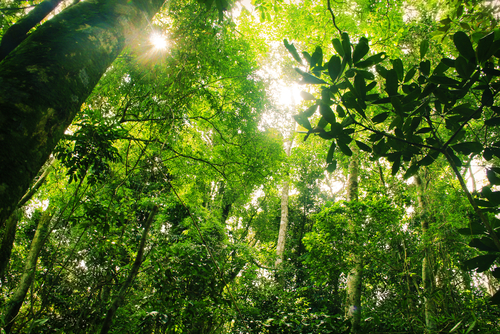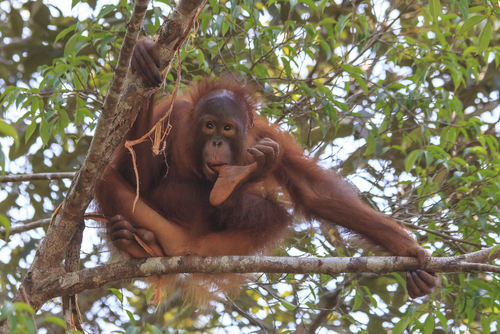Written by Becky Striepe for Care2.
Palm oil–a seemingly innocuous ingredient–is decimating populations of orangutans and other rainforest species.
Oreos are actually far from the only food containing palm oil. And orangutans aren’t the only animals being killed in the name of palm oil production.
Let’s take a look at how palm oil is killing chimps and other animals and how to get palm oil out of your kitchen.
Palm Oil Production
Palm oil is exactly what you’d guess: oil derived from part of the palm tree. You’ll see it on packages listed as palm oil, palm fruit oil, palmitate, palmitoyl or even sustainably harvested palm oil. No matter how you phrase it, it’s bad news.
The palm trees that produce palm oil grow best in areas that used to be covered by rainforest. These fragile ecosystems have been slashed and burned to make way for palm plantations. Chimpanzees, orangutans, tigers, birds and people are losing their homes so that we can make chips, cookies, margarine and cosmetics.
What happens when we raze these areas? The animals and people just move elsewhere, right? Watch this video:
The trouble is, our taste for palm oil has damaged so much of the rainforest that these beautiful animals and indigenous people have nowhere left to go. Orangutans in Borneo are starving to death, because their habitats have been destroyed by so-called “sustainable” palm oil operations. Chimpanzees in Cameroon look like they will be the next victims of our processed food industry.
Pass the Oreos! Which—you guessed it—contain palm oil.
Avoiding Palm Oil
The easiest way to protect these endangered species is to avoid palm oil, but once you start reading ingredients lists that task starts to seem pretty daunting. Y’all: palm oil is in everything.
It’s in salty snacks like chips and crackers. It’s in your Girl Scout Cookies. It’s in vegan butter. It’s in many cosmetics. It’s also not just in regular packaged food. Those “natural” brands of chips, cookies and crackers can also contain palm oil. I did a little bit of pantry research and discovered palm oil in my box of Back to Nature Peanut Butter Creme Cookies.
The best way to avoid palm oil is to avoid processed food wherever you can and carefully read the ingredients when you’re shopping for cosmetics or any packaged food.
What About Sustainable Palm Oil?
In the 2010 video above, the World Wildlife Fund mentions that there are sustainable palm oil operations out there. Processed food-makers can use Certified Sustainable Palm Oil (CSPO)… but how trustworthy is that certification?
The CSPO label comes from a group called the Roundtable on Sustainable Palm Oil (RSPO). Remember those starving orangutans in Borneo? The company that destroyed their homes was producing RSPO-certified palm oil.
The problem is that it’s just so hard to police. Palm oil production often takes place in remote areas, and checking up on every producer is difficult and expensive. That means that much CSPO may be produced to minimize habitat loss, but you can’t be 100 percent certain. Whether you trust that label or not is really up to you.
Bonus…
Listen to the latest Green Divas Radio Show with EcoWatch founder and environmental powerhouse Stefanie Spear:
Asst. Ed. ~ Green Diva Amanda
